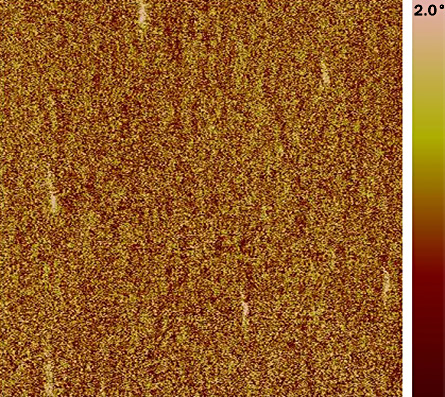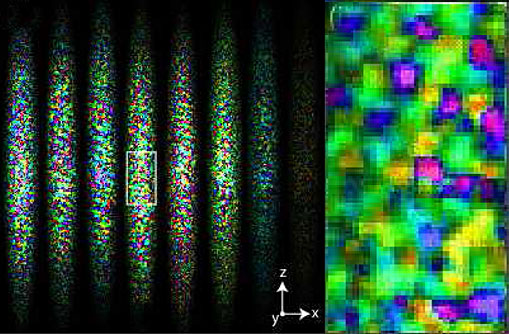The American Physical Society Meeting
Get your daily physics news here from the March meeting of the American Physical Society
Physicists are gathering in Pittsburgh March 16 through 20 to share their work during the March meeting of the American Physical Society. Offerings so far look closely at the smallest scales: how nanoparticles may affect photosynthesis, and how glass molecules change vibration whether they’re part of a solid or liquid.
Quantum dots pull a number on algae
Nanoparticles interfere with cells’ ability to perform photosynthesis
PITTSBURGH — Nanomaterials keep slacks stain-free and sunscreens clear. But nanoparticles may also wreak havoc in the environment after the sunscreen goes down the drain and runs into a river. Priyanka Bhattacharya of Clemson University in South Carolina and her colleagues found that quantum dots, a kind of nanoparticle, can have “significant effects on the bioactivity” of algae, she reported March 16 at a meeting of the American Physical Society.
The nanoparticles decreased the algae’s ability to perform energy-producing photosynthesis, Bhattacharya said. In photosynthesis, plants make energy by taking in carbon dioxide and releasing oxygen. Blue-green algae exposed to high levels of quantum dots for three hours absorbed significantly less carbon dioxide and released less oxygen than did unexposed algae, says Bhattacharya.
A single-celled plant species found in soil and freshwater, the blue green algae used in Bhattacharya’s research is a major food source for many aquatic animals. The researchers don’t yet know the molecular details of how quantum dots interfere with algae’s photosynthesis. — Laura SandersGlass molecules twinkle
‘Twinkling fractal theory’ helps explain behavior of glassy materials
When water freezes into ice, molecules calm down and assume a regular, crystalline pattern. As glass turns from a molten liquid to cool solid, on the other hand, its molecules slow down but never completely stop, making glass a mysterious state of matter. “The glassy state is one of the most unsolved areas in material sciences,” says Wool.
At the glass transition point between solid and liquid, roughly half of the molecules are in the solid state, says Wool. These crystalline clusters make a fractal pattern, so that a small piece of a glass crystal has the same order and composition as seen in a zoomed-out view of many crystals. As molecules in glass jump from solid crystals to liquids and back, the molecules’ vibrational energies change — or, as Wool says, the molecules “twinkle.” Studying the predicted energies associated with these changes prompted Wool to develop the “twinkling fractal theory,” an idea he published last year to predict the behavior of molecules in glass.
His new experimental results support the theory, reported at the meeting. Using atomic force microscopy, Wool and colleagues took a picture every second for 512 seconds of a twinkling amorphous polystyrene as it hovered between a solid and a liquid. The results, which showed when and where each solid molecule left the solid for the liquid and vice versa, fit well with the energy changes predicted mathematically by the twinkling fractal theory.
Solving the so-called twinkling frequency of glassy molecules may lead researchers to understand how different glassy materials, which include polymers, ceramics and some types of metal, perform under heat, says Wool. — Laura Sanders

TWINKLE LITTLE MOLECULE. At the glass transition point, molecules of
polystyrene switch between solid molecules (peach) to liquid molecules
(dark brown) across time (the y axis at right). Image is 700 nanometers
wide.
IMAGE CREDIT: R. Wool

Rubidium atoms simultaneously act like a solid and a superfluid
PITTSBURGH — Hallmarks of an exotic state of matter called a supersolid have been spotted in a gas of ultracold rubidium atoms. In the same piece of matter, researchers found signs of the seemingly disparate properties of both solidity and superfluidity, the frictionless flow of atoms. Read more.

Scientists strengthen claim that fractal analysis for authenticating a Pollock painting is moot PITTSBURGH — A proposed method for authenticating artist Jackson Pollock’s drip paintings does not hold up under scrutiny, a new analysis finds. Read more .







